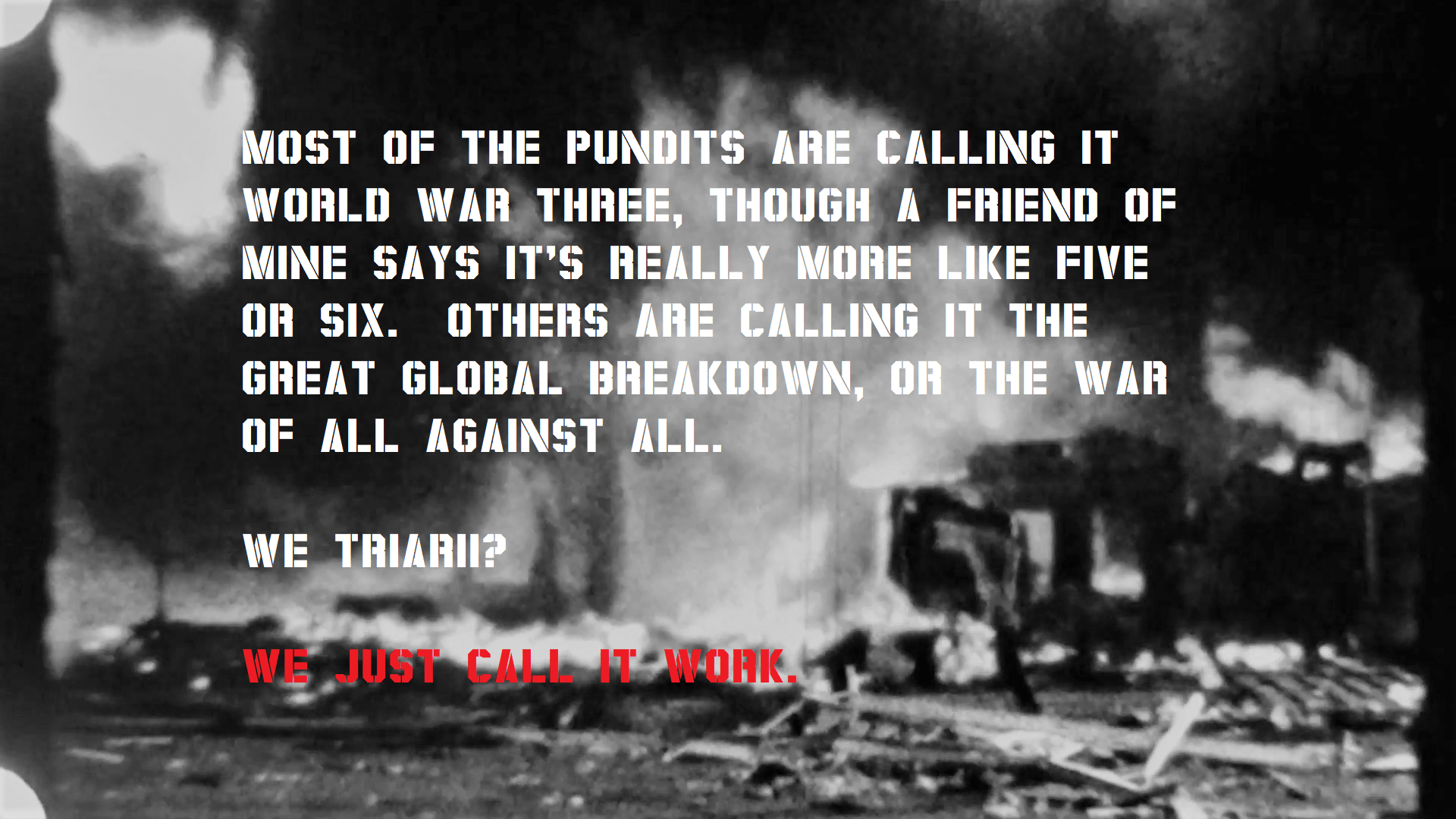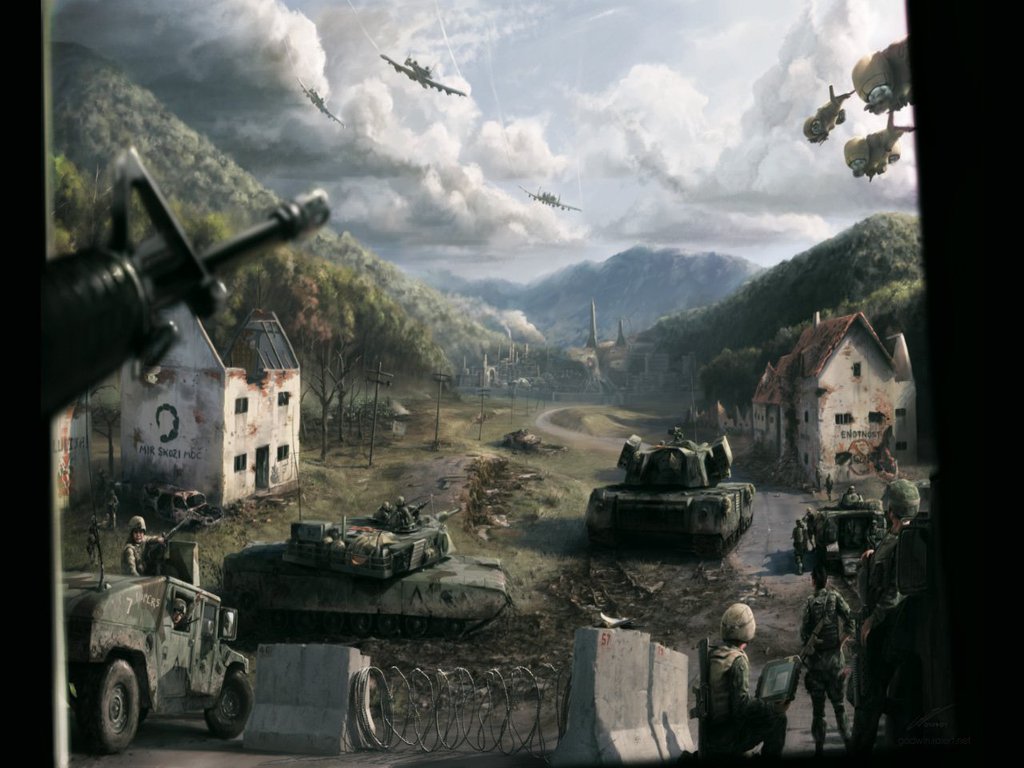While the first-person narrative of the Maelstrom Rising series will limit each book or phase to a particular theater, the events of the series will have global scope. The interconnectedness of current global politics and economics mean that when the order breaks down in one place, there will be ripples elsewhere. And multiple simultaneous such breakdowns lead to the perfect storm that is Maelstrom Rising. The events in East Asia and the Western Pacific during this series will be rooted in current trends already happening over the last ten years or more. While most open focus has been on China and North Korea (which will be dealt with in later installments of this article series), this article will look at the near future of Japan. Specifically, the near future of Japan as a military power.
Setting the Stage, Part 1

The idea for my current work in progress came a couple years back. It involved a complete breakdown in what we have come to consider the “global world order” since the disintegration of the Soviet Union and the paradigm shift represented by Operation Desert Storm (though the whirlwind victory and subsequent return to the status quo represented by that short-lived war turned out to be more of a fluke than a lasting reality, despite it forming the basis for most of Tom Clancy’s post-Cold-War fiction). While the American Praetorian series had already represented some of a similar model of breakdown, it was largely focused on the continuing war against jihadism, and that war’s unintended consequences. This is something different.
Weapons for Near-Future Settings and “Kraut Space Magic”

I’ve had to do some research into possible near-future weapons systems for a couple of series, now. If you’ve read The Colonel Has A Plan, you might have noticed that the Marines under Colonel John Brannigan are using M27s and LSAT machineguns instead of the current M4s and M249s or M240s. Similarly, the Marines at Camp David in Lex Talionis are armed with M27s. Now, arming Marines with M27s is an easy choice, since the Marine Corps recently announced a wider deployment of the glorified HK 416s, but it touches on a common theme when writing near-future military fiction. Including new weapons and gear that isn’t necessarily in common use yet helps to establish your setting.
Updates and Revisions
It’s been a slow couple of weeks, because that’s how outlining goes. I’d hoped to speed that process up, but the Cogitation Engine only seems to work so fast, and outlining a book still takes the better part of a week. A week for less than 5k words (Grumble, growl), but those 5k – are necessary to get the machine running when it comes to hammering out the draft. In the meantime, however, the aforementioned updates to the American Praetorian series have begun. Task Force Desperate has been reformatted, bringing the front and back matter (and the rest of the interior formatting) more in line with later stuff. Applying the lessons of the last six years, you might say (yes, it has been six years since TFD first was published). There’s also a new cover. Over the five years of the series, the style was developed to a sharp point, and so we’re going back and touching up the first couple to match. Feast your eyes: Hunting in the Shadows will be getting a similar update soon; I’ve just got to figure out what reference photos to send Derrick for him to work the silhouettes. Currently, the Kindle edition has
So, This Happened
Dave Reeder, from Breach-Bang-Clear (which I’ve written some articles for in the past), is a bit of a fan of the American Praetorians series. So much so, in fact, that he commissioned an American Praetorians Radical Firearms RF-15 for me. Haven’t had a chance to shoot it yet, but it feels good, and it looks badass. Consider this your official Thank You, Dave.
Eyeing the Backlist
I’m reading Chris Fox’s book, Relaunch Your Novel: Breathe Life into Your Backlist. With The Unity Wars launched, and so far doing just about as well as Brannigan’s Blackhearts (rather than exponentially better, as I’d hoped), I’ve started thinking about the fact that my backlist isn’t quite earning as much as it should be. I’ve already done a little bit along these lines, with the new cover for Kill Yuan. Reading Chris’ work, however, it could probably use some more tweaking, mainly in the blurb, keywords, and marketing aspect. American Praetorians and Jed Horn get a bit thornier. At this point, I think that a full relaunch of both series would be in order. Jed Horn hasn’t ever done as well as the Praetorian books, in no small part because I simply marketed it to my fans, such as there are, and they were looking for military action. It didn’t really make it in front of the more MHI/Repairman Jack sort of audience. So, in addition to new covers for the first two at least (and probably new type for all four), it would benefit from a full relaunch. The Praetorian books get a little more complicated. Task Force Desperate
Quick News Update
That’s Mickey Spillane, not me. But that’s a manly writer photo, right there. Seemed fitting. So, I’ve been busy. Really busy. Too busy to do much blogging, either here or over on The Unity Wars. Going to try to start picking up the slack on that soon, once I get draft writing somewhat stabilized. Given some market research, and seeing how the last book has done, The Unity Wars is moving somewhat to the forefront for the moment. That doesn’t mean that Brannigan’s Blackhearts is going away anytime soon; it is, however, going to slow down just a bit. Probably going to be four books per year, rather than six. I’ve barely scratched the surface on High Desert Vengeance, Brannigan’s Blackhearts #5, but I should be able to hit it hard after the next couple of weeks. Look for it in August. I’m also working on a pitch for another project that hopefully I’ll be doing with another author and good friend of mine. Can’t say much about it yet; we’re still hashing out the details, and he’s got to sell it to his publisher. Keep your fingers crossed. And with that, back to the word mines with me.
The Key To Authentic Combat Action Scenes
What’s the key? What makes a combat scene really “authentic?” Pain. There’s an old saying in the Recon community: “Recon ain’t fun.” It’s pain and agony and suffering, only faced with the grit and perseverance to get through it and survive, to kill the enemy before they kill you. Over on Tom Kratman’s wall on FB, the subject has come up of a young woman on a panel at Life, The Universe, And Everything 2017. She claimed at one point that “gamers can write good action scenes, because we’ve experienced that.” No. No, you haven’t.
Overtaken By Events
“Timeliness” is a temptation that I think most military/spy fiction writers have to deal with. “Ripped from the headlines!” and “Prophetic!” are compliments that reviewers have used for works in the genre going back to Tom Clancy, at least. Those same phrases have been applied to some of my own work, and I’ll admit that it can be somewhat affirming (though often in a grim sort of way) to see events move in a generally similar direction to that predicted in one of your novels. It shows you that you read the situation fairly accurately.
On Gun Porn
No, this isn’t about InRangeTV opening an account on PornHub. (Yes, apparently that’s a thing. No, I haven’t gone looking for it, nor will I.) This is about the facet of much Action Adventure writing known colloquially as “Gun Porn,” wherein the author includes (and often lovingly describes) various cool and interesting firearms in the story. This isn’t particularly new; a lot of Louis L’Amour westerns describe interesting (and sometimes obscure) weapons that aren’t commonly found in the run-of-the-mill western (particularly on screen). But as with any element of storytelling, there’s a right way and a wrong way to go about it.
